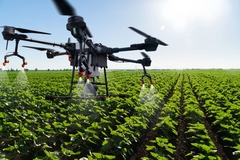WHO-backed study sheds new light on ultra-processed foods’ link to chronic diseases
15 Nov 2023 --- Experts linked higher ultra-processed food (UPF) consumption with an increased risk of multimorbidity — the co-occurrence of at least two chronic diseases — of cancer and cardiometabolic diseases. However, the researchers only found an increased risk (+9%) associated with consuming animal-based products and artificially and sugar-sweetened drinks. In comparison, ultra-processed bread and cereals and plant-based alternatives lowered the risk of multimorbidity (-3%).
The study, which included 266,666 participants from seven countries, followed them for 11.2 years to determine whether they developed heart disease, cancer or type 2 diabetes.
The authors and commenting experts caution that the study is observational. As such, it “cannot conclude a cause and effect relationship between diet and disease outcome — only the direction of an association; increase or decrease in risk,” notes Christine Williams, emeritus professor of human nutrition at the University of Reading, in the UK.

However, she welcomes the finding that the subgroup “ultra-processed breads and cereals” was significantly associated with lower levels of multimorbidity.
“This is an important finding because many informed commentators have identified these foods as important for intakes of fiber, micronutrients and complex carbohydrates. Children commonly eat these foods and those on limited incomes and should not be demonized by categorizing them as UPFs.”
“The reduced risk of multimorbidity with bread and cereals suggests the high UPF classification may be misleading for some groups of foods,” Williams underscores.
WHO-backed EPIC study
The researchers used data from the European Prospective Investigation into Cancer and Nutrition (EPIC) study, which is hosted and coordinated by the International Agency for Research on Cancer, an agency of the World Health Organization (WHO).
.jpg) Experts note that the high UPF classification may be misleading for some groups of foods, such as bread.The EPIC study investigates the associations of diet, lifestyle, genetic and environmental risk factors with cancer incidence and other diseases.
Experts note that the high UPF classification may be misleading for some groups of foods, such as bread.The EPIC study investigates the associations of diet, lifestyle, genetic and environmental risk factors with cancer incidence and other diseases.
Between 1992 and 2000, study participants registered food and beverages consumed over the previous 12 months. After enrolment, people were contacted every three to four years to obtain information on major diseases.
The current research, published in The Lancet Regional Health Europe, included data from the EPIC study from seven countries (Denmark, Germany, Italy, Spain, Sweden, the Netherlands and the UK). It excluded patients suffering from cardiovascular diseases, cancer or diabetes.
UPF classification
To estimate the consumption of UPF, which was not recorded separately in the EPIC study, the researchers incorporated the NOVA food classification system into the EPIC database to assess the degree of processing in food products.
“Researchers had to break down foods into different ingredients to try and work out if it is ultra-processed or not,” explains Dr. Duane Mellor, registered dietitian and senior lecturer at Aston Medical School, UK.
“This approach, especially as the food data is up to 30 years old, could open this type of interpretation of historical data using a modern definition to error. Additionally, not all the food questionnaires were designed to fully quantify food intake, potentially increasing the risk of error.”
The study divided UPFs into nine subgroups to determine their effect on multimorbidity: ultra-processed breads and cereals; sauces, spreads and condiments; sweets and desserts; savory snacks; plant-based alternatives; animal-based products; ready-to-eat/heat mixed dishes; artificially and sugar-sweetened beverages; and other ultra-processed foods.
 The NOVA system uses four categories: unprocessed foods, processed ingredients, processed foods and UPFs.Not all are created equal
The NOVA system uses four categories: unprocessed foods, processed ingredients, processed foods and UPFs.Not all are created equal
Kevin McConway, emeritus professor of applied statistics at Open University, UK, explains that the researchers also examined associations for the different subgroups to find the additional effect of changing consumption in one subgroup while consumption of other UPFs stayed the same.
The two groups with a statistically significant link to increased risk — animal-based products and artificially and sugar-sweetened beverages — involve food or drink for which there is evidence of their health risks, adds McConway.
“But also there was one group, ultra-processed bread and cereals, for which people who ate more of them tended to have a lower risk of multimorbidity, not higher,” he continues, “though the statistical evidence for this association is pretty marginal.”
“The researchers suggest that, if this association does exist and is one of cause and effect, it could be because of fiber in those bakery products, which is known from previous work to be protective against some diseases. The other six UPF subgroups showed no clear evidence of association with multimorbidity risk.”
Cause and effect
McConway emphasizes that as the study is observational, it cannot conclude whether the participants’ diets caused the risk differences identified.
“There were many other differences, on other factors than diet, between the people who reported eating different amounts of UPFs. One or more of these other factors, known as confounders, might be causing the differences in health risks.”
“Confounding can hide an association that exists, as well as making one appear that doesn’t exist, and it can even change the direction of an association from higher consumption increasing risk to higher consumption decreasing risk, or vice versa. So we really can’t be sure of anything here in terms of causation.”
 The lower multimorbidity risk associated with bread and cereals may be because of the fiber in those products.However, he adds that observational studies can add to the evidence base and point to new research directions for further studies. “The number of observational studies that have found associations between levels of UPF consumption and various health outcomes is now pretty large,” notes McConway.
The lower multimorbidity risk associated with bread and cereals may be because of the fiber in those products.However, he adds that observational studies can add to the evidence base and point to new research directions for further studies. “The number of observational studies that have found associations between levels of UPF consumption and various health outcomes is now pretty large,” notes McConway.
Study limitations
The study’s authors note several additional research limitations. They caution that misclassification of foods according to NOVA may have occurred and that the study did not record potential changes in behavior during the eleven-year follow-up period. The study participants may not always have been representative of the general population.
“During 1992-2000, when diets were assessed, the food frequency questionnaires will not have recorded information on the degree of processing,” explains Williams. “It is likely there will have been insufficient detail to allow the NOVA system (used from 2016 onwards) to be used to estimate dietary UPF levels accurately.”
“Another key question for UPFs is whether the reported associations are due to processing per se, or whether these reflect the fact that high UPF diets are high in fat, sugar and salt, high in processed meats but low in fruits and vegetables,” she adds.
Williams notes that these dietary characteristics may have been “the real culprits rather than UPFs.” While statistical methods can help account for the effects of these nutrients on disease risk, she laments that the study’s authors did not show the levels of these nutrients or foods in the diet or adjust for them, “especially as these analyses will be readily available to them.”
“If the risk association with UPFs disappears when these adjustments are made, then this suggests the diet in general rather than UPFs is the problem. If the risk remains, it suggests other, as yet unknown, factors in UPFs that may contribute to risk.”
By Jolanda van Hal












